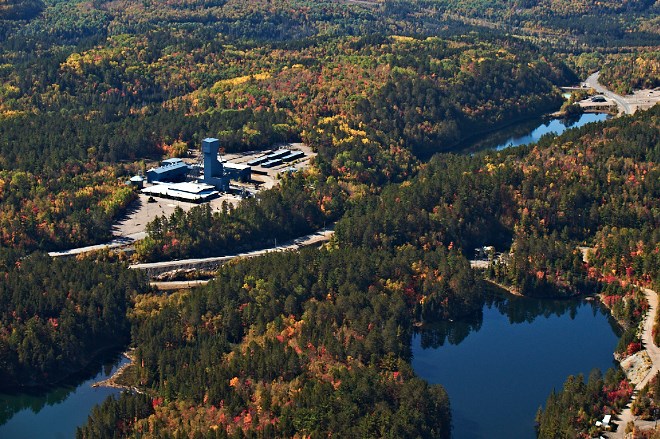When Shayne Wisniewski envisions what the future of underground mining will look like in Sudbury, he sees depth and he sees innovation.
As general manager of mining projects for Sudbury Integrated Nickel Operations (Glencore), Wisniewski is responsible for evaluating the company’s Onaping Depth project, which will extend to a depth of more than 2,500 metres, considered an ultra-deep mine.
Located about a 45-minute drive from the city of Sudbury, below the company’s Craig and Onaping Mines, the nickel-copper-PGE deposit was first discovered in 1994, when the company was looking for the down dip extension for Onaping and Craig, Wisniewski said.
Glencore undertook a drill program in the area in 2014, looking for footwall mineralization and define a southeast zone.
“The grades are probably double what we’ve mined here to date in the Sudbury basin at Falconbridge and now Glencore,” Wisniewski said during a recent presentation to the Sudbury chapter of the Canadian Institute of Mining, Metallurgy and Petroleum.
“The grades are very good. It’s a good orebody.”
The project is awaiting full approval, but development work has begun. In 2017, the company is planning $29 million worth of work, which includes driving two 1.1-kilometre tunnels.
That work will take the company to Sept. 30, Wisniewski said, and then it will look for more funding for the second half of the year.
In years two and three, the company plans to sink the shaft, to just under 2,600 metres, complete some off-shaft development, and get the underground infrastructure in place.
Additional diamond drilling will take place in 2019 or 2020 to firm up the resource to make the project more economical, Wisniewski said.
The first development ore is expected in late 2022 or early 2023, and by year eight, the mine will be up to 60 per cent production capacity, he noted.
Though the project has a long lead time, Wisniewski believes it will be worth it, as the mine will be able to withstand the cyclical nature of the industry.
“This orebody, if it goes according to this plan, it will be in the bottom quartile of cash costs in the world of nickel mines,” he said. “It’s a good play; it’s robust.”
For hauling ore to the surface, the company has chosen battery-electric trucks, which Wisniewski said brings a host of advantages.
Workers’ health will benefit because of fewer diesel emissions, vibration and noise.
Carbon emissions will be reduced, resulting in a better environmental footprint. And the economics are better, because of things like lower-profile openings and cost savings to operate the equipment.
“The cost for our ventilation systems and refrigeration systems were astronomical,” he said. “Eliminating diesel and designing the vent system for air quality allowed us to cut the power and the energy needed, and the refrigeration and the cooling, almost in half by doing that.”
Not all decisions on equipment have yet been finalized, Wisniewski said, but Glencore does have some vehicles in use already, while testing will begin shortly on other equipment.
Caterpillar will start testing its 7-tonne load-haul dump loader at Onaping Depth, starting in July, and Glencore is additionally involved with two projects with the Ultra-Deep Mining Network (UDMN) in Sudbury.
Ultimately, the company’s goal is to keep people out of harm’s way and reduce the time that workers have to be at the face.
“We’d like to have nobody at the face and everyone 20 metres back, so how do we do that?” Wisniewski said. “We don’t know 100 per cent yet, but our goal is every year to put less and less hours at the face, to keep everybody safe.”
To service the fleet, the company will build a shop similar to the one in use at Nickel Rim, which Wisniewski said “has paid for itself over time,” in how it has extended the lives of the vehicles, reduced operating costs, and made the vehicles more reliable.
Glencore will flow power to the mine via a 27.6-kilovolt distribution system, which will make power more readily available and allow the company to dig deeper, using its existing cables, if more ore is found in the future, Wisniewski said.
Other features of the mine include refrigeration and ventilation-on-demand, the latter of which is already in place in some areas at Nickel Rim.
Onaping Depth will also have Wi-Fi throughout the mine, extended to the face. The goal, Wisniewski said, is to avoid installing leaky feeder and rely solely on one communications system.
“If you don’t have that system in place, you can’t do everything else you want to do, like autonomous mining and mucking from surface,” Wisniewski said. “So you need to get that backbone right.”
Miners will be equipped with tablets, and development will be tracked and scheduled through a scheduling system.
“Eventually, the goal is such that the schedule will get feedback direct from the equipment,” Wisniewski said. “So if you’re drilling, the drill will tell the schedule what per cent done it is, and take the miner out of the equation on providing information. We’re testing this as we speak.”
Ultimately, the company wants to use real-time monitoring, so it can find problems and address them quickly to boost productivity, he added. Wisniewski noted that an “almost identical project” is simultaneously happening at Nickel Rim.




